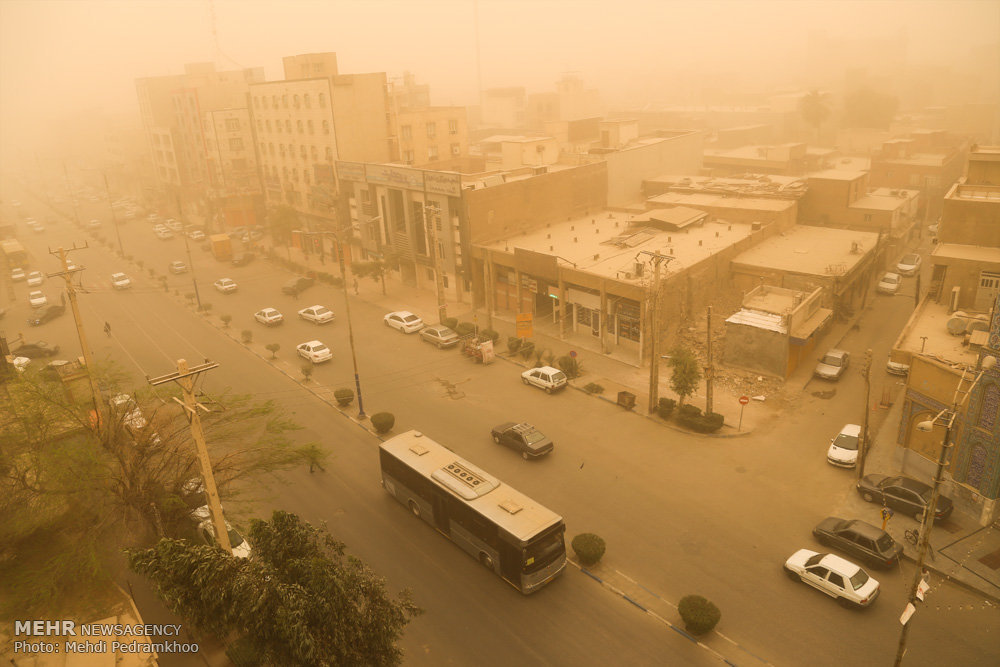It takes 3 years to eliminate internal SDS hotspots: DOE chief

TEHRAN – Eliminating internal hotspots for sand and dust storms (SDSs) in southwestern provinces of Iran requires a 3-year period, ILNA quoted the chief of the Department of Environment Isa Kalantari as saying on Friday.
Referring to recent meeting on tackling sand and dust storms crisis in Khuzestan Province that was held on Thursday with some MPs and administration representatives in attendance, Kalantari noted that in-depth discussions were followed and one of its results was that this challenge cannot be resolved in a short-term period.
Providing the water right of the environment for moisturizing internal SDS sources was one the decisions taken in this meeting, said the environment chief, adding that this will need at least 7 or 8 months of work and cannot be implemented in the current [Iranian calendar] year [ending on March 20].
He also went on to say that the water right of Khuzestan’s environment is estimated to be around 4.5 billion cubic meters which must be granted to the area.
“80 percent of sand and dust storms in winters are fed by internal hotspots,” he highlighted.
SDS is a national problem
“This is a critical issue and needs the cooperation between government bodies,” said Parliament (Majlis) speaker Ali Larijani over the aforesaid meeting on Thursday.
He urged the Ministry of Energy to provide the environment water right in Khuzestan and other provinces.
Larijani also called on the Agriculture Ministry to adopt required measures to guide water to SDS resources.
According to the special decree of the Leader of the Islamic Revolution Ayatollah Seyyed Ali Khamenei and the cooperation between Majlis and the administration, appropriate budget will be allocated to SDS challenge in the next fiscal year 1397 (starting on March 21), Larijani highlighted.
‘No comprehensive plan to fight SDS’
MP Majid Naseri-Nejad criticized the administration for not offering any comprehensive plan to Majlis for the fight against SDS crisis in Khuzestan Province, Tasnim reported.
“The citizens of [Iran’s] metropolitan areas, especially those situated in southern regions, are suffering substantial damages from SDS and air pollution, however, the Department of Environment just releases statements and doesn’t provide any practical solution,” he added.
The MP went on to say that if the administration offers any comprehensive plan, Majlis will “definitely” support it.
Khuzestan was again hit by another strong sand and dust storm last week. The concentration of the fine particles astonishingly went beyond dangerous level of 9,000 micrograms per cubic meter while according to the United States Environmental Protection Agency (EPA) the short-term standard (24-hour or daily average) is 35 micrograms per cubic meter of air.
MAH/MQ/MG
Leave a Comment